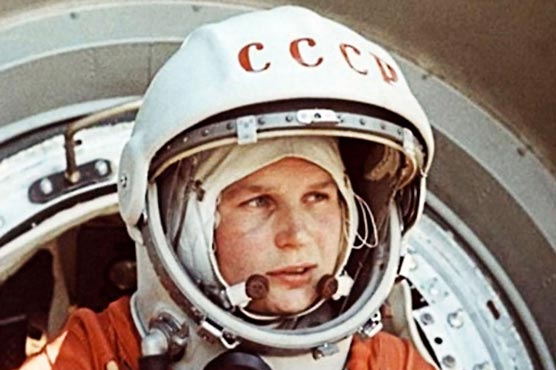With genuine pride, Russia commemorated this Monday the 60th anniversary of the feat of Yuri Gagarin, the first human being who traveled beyond Earth without having the certainty of being able to return and who allowed the Soviet Union to score an undisputed victory over his main competitor, the United States, in the space race.
“On April 12, 1961, a great event occurred that, without exaggeration, changed the world. A new epoch began, the cosmic era, the era of the conquest of space. And we will always be proud that it was our country that opened the way to the universe, and the pioneer on that great route was a compatriot of ours, Yuri Gagarin, “said President Vladimir Putin, from the city of Engels, Saratov region, by opening by videoconference a meeting dedicated to the priorities of the space sector in Russia.
Putin attended the opening of the Park of the Conquerors of Space, in the same place where Gagarin landed in the Saratov region, one of the commemorative activities together with the inauguration of the museum of the history of cosmonautics in the city of Kaluga and numerous events in Smolensk, Samara, Orenburg and many other cities in the country.
“Our duty – added the Russian president – is not only to honor the generation of space conquerors, the bravery of cosmonauts who, despite the risks, advanced into the unknown, the ability of those who created unique space systems and prepared the crews to work in orbit, not to forget anyone who with their effort and talent created and strengthened our cosmic potential. “
The head of the Kremlin stressed that “it is also our duty to make the Russian space sector equal to the pioneers of the cosmos.”
Since April 12, 1961, 556 people have traveled to space – the most recent three, an American astronaut and two Russian cosmonauts just days ago – but when Gagarin did, his mission had only a 50 percent chance of success. to the extent that the official TASS news agency prepared three dispatches beforehand: one successful, which is the one that was broadcast; another to the effect that a Soviet cosmonaut had landed outside the territory of the Soviet Union and needed help or rescue, and one more that he had died.
At that time there were many doubts regarding the safety of the carrier rockets, of the capsule as the ship was called, of the communication and management systems, and it was not even known if the human being could exist and work in space. .
Gagarin’s mission, as can be read in a declassified document of the Government Commission dated April 8, 1961, was: “To carry out a flight around the Earth at an altitude of between 180 and 230 kilometers in an hour and 30 minutes. duration, with landing in a certain area. The goal of the flight is to verify that a human being can be in space inside a conditioned spacecraft, to check the operation of the installed equipment, to check the communication of the spacecraft with the Earth, to verify the effectiveness of the spacecraft’s landing resources. and the health status of the cosmonaut ”.
A year before Gagarin’s flight, the first rocket of the Vostok program was launched, which carried a doll baptized as Ivan Ivanovich, the spacecraft was able to reach its orbit, but it never returned when the orientation system failed. On July 28, 1960, in a second attempt, an accident occurred with the carrier rocket and its two crew members, the dogs Chaika and Lisichka, died when the device exploded.
Luckier were the dogs Belka and Strelka, who on August 19, 1960 were able to travel into space and return safely, in what was the only fully successful experiment that year. On December 1, the ship with the Mushka and Pcholka dogs began to descend outside the territory of the Soviet Union and a decision was made to blow it up so that it would not fall into the hands of specialists from other countries.
On December 22, 1960, a rocket with the dogs Kometa and Shutka could not reach its orbit, but the ship separated without problems and the dogs were saved by landing in the taiga.
Before sending Gagarin, as early as 1961, there were two more successful launches of Vostok rockets identical to the one used with him, manned by Ivan Ivanovich with the dogs Chernushka, in the first, and Udacha, in the second. At that time, the Vostok did not have an effective emergency rescue system, since it could not be considered as such a copy of the aviation catapults, which in the event of an explosion could only launch the crew a few meters away .





